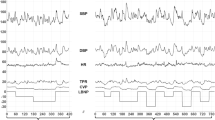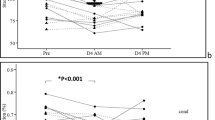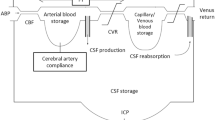Abstract.
The objective of this investigation was to identify the major cardiovascular changes induced by exposure to real or simulated 0g (spaceflights: 6, 14, 21 and 25 days, and 6 months; head down tilt, HDT: 10 h, 4, 5, 7, 30 and 42 days), with a minimum of countermeasures. The following cardiovascular data were measured by echocardiography and Doppler ultrasonography: left ventricle end-diastolic volume (LVDV), stroke volume (SV), cardiac output (CO), ejection fraction (EF), middle cerebral artery flow velocity (% MathType!MTEF!2!1!+- % feaaeaart1ev0aqatCvAUfKttLearuavP1wzZbqedmvETj2BSbWexL % MBbXgBcf2CPn2qVrwzqf2zLnharyWqVvNCPvMCG4uz3bqee0evGueE % 0jxyaibaieYlf9irVeeu0dXdh9vqqj-hEeeu0xXdbba9frFj0-OqFf % ea0dXdd9vqaq-JfrVkFHe9pgea0dXdar-Jb9hs0dXdbPYxe9vr0-vr % 0-vqpWqaaeaabiGaciaacaqabeaadaqaaqaaaOqaaiqbdgfarzaaca % WaaSbaaSqaaiabbogaJjabbggaHbqabaaaaa!38E6! \(\dot Q_{{\rm ca}} \) ), femoral artery flow velocity (% MathType!MTEF!2!1!+- % feaaeaart1ev0aqatCvAUfKttLearuavP1wzZbqedmvETj2BSbWexL % MBbXgBcf2CPn2qVrwzqf2zLnharyWqVvNCPvMCG4uz3bqee0evGueE % 0jxyaibaieYlf9irVeeu0dXdh9vqqj-hEeeu0xXdbba9frFj0-OqFf % ea0dXdd9vqaq-JfrVkFHe9pgea0dXdar-Jb9hs0dXdbPYxe9vr0-vr % 0-vqpWqaaeaabiGaciaacaqabeaadaqaaqaaaOqaaiqbdgfarzaaca % WaaSbaaSqaaiabbAgaMjabbggaHbqabaaaaa!38EC! \(\dot Q_{{\rm fa}} \) ), cerebral vascular resistance (R ca), femoral vascular resistance (R fa), jugular vein cross-sectional area (A jv), femoral vein cross-sectional area (A fv), heart rate (HR), and mean blood pressure (MBP). LVDV remained decreased compared to pre-HDT or pre-flight levels after 1 week of spaceflight or HDT (–8 to –13%, P<0.05), EF did not change. HR tended to increase (5–10%) during spaceflight and HDT, whereas MBP tended to decrease during flight, but did not change in HDT. These findings are consistent with the existence of a moderate and stable hypovolemia. % MathType!MTEF!2!1!+- % feaaeaart1ev0aqatCvAUfKttLearuavP1wzZbqedmvETj2BSbWexL % MBbXgBcf2CPn2qVrwzqf2zLnharyWqVvNCPvMCG4uz3bqee0evGueE % 0jxyaibaieYlf9irVeeu0dXdh9vqqj-hEeeu0xXdbba9frFj0-OqFf % ea0dXdd9vqaq-JfrVkFHe9pgea0dXdar-Jb9hs0dXdbPYxe9vr0-vr % 0-vqpWqaaeaabiGaciaacaqabeaadaqaaqaaaOqaaiqbdgfarzaaca % WaaSbaaSqaaiabbogaJjabbggaHbqabaaaaa!38E6! \(\dot Q_{{\rm ca}} \) and R ca fluctuated between +10 and –10% from pre-HDT or pre-flight values, and always showed opposing variations. There was no significant decrease in cerebral perfusion. Lower-limb resistance (R fa) remained decreased (–5% to –18%, P<0.05) throughout the flights or HDT after week 1. A jv remained significantly enlarged (+40% P<0.05) after 1 week in spaceflight or in HDT. A fv was enlarged in spaceflight after week 1 (+15% to +35%, P<0.05), whereas it decreased after 4–5 days of HDT (–20% to –35%, P<0.05). The cardiovascular system reached a new and stable equilibrium during flight and HDT within less than 1 week. With the exception of the femoral vein, there was no significant difference in either the amplitude or the time course of the cardiovascular changes in both situations after 1 week.
Similar content being viewed by others
Author information
Authors and Affiliations
Additional information
Electronic Publication
Rights and permissions
About this article
Cite this article
Arbeille, P., Fomina, G., Roumy, J. et al. Adaptation of the left heart, cerebral and femoral arteries, and jugular and femoral veins during short- and long-term head-down tilt and spaceflights. Eur J Appl Physiol 86, 157–168 (2001). https://doi.org/10.1007/s004210100473
Accepted:
Issue Date:
DOI: https://doi.org/10.1007/s004210100473




